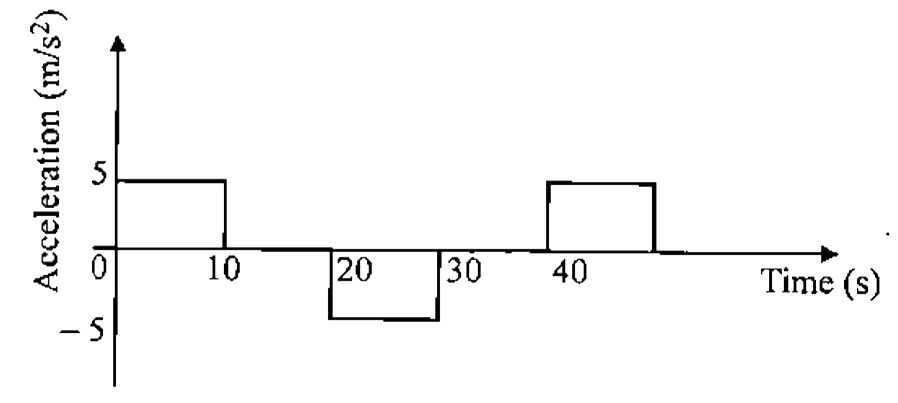Draw position vs time graph of uniform velocity.
Step by step video, text & image solution for Draw position vs time graph of uniform velocity. by Physics experts to help you in doubts & scoring excellent marks in Class 7 exams.
Related Playlists
- BOOK - PEARSON IIT JEE FOUNDATIONCHAPTER - KINEMATICSEXERCISE - Level 36videos
KINEMATICS
- BOOK - PEARSON IIT JEE FOUNDATIONCHAPTER - KINEMATICSEXERCISE - Test 115videos
KINEMATICS
- BOOK - PEARSON IIT JEE FOUNDATIONCHAPTER - KINEMATICSEXERCISE - Level 2 MCQ12videos
KINEMATICS
- BOOK - PEARSON IIT JEE FOUNDATIONCHAPTER - HEAT EXERCISE - Test 214videos
HEAT
- BOOK - PEARSON IIT JEE FOUNDATIONCHAPTER - LIGHTEXERCISE - ASSESSMENT TEST (TEST 2 (SELECT THE CORRECT ALTERNATIVE))15videos
LIGHT
Similar Questions
What can be deduced from the slope of a position-time graph of uniform motion?
View SolutionDraw velocity – time graph of uniformly accelerated motion in one dimension. From the velocity – time graph of uniform accelerated motion, deduce the equations of motion in distance and time.
View SolutionThe acceleration vs time of a particle moving along +x direction is shown in figure-1.23. If starts at t=0, from rest, Draw the position -time graph for the motion.
 View Solution
View SolutionDraw the position-time graph of a stationary object.
View SolutionDraw the position-time graph of an object moving with positive accceleration.
View SolutionDraw the position-time graph of a moving object, moving with zero acceleration.
View SolutionDraw velocity-time graph of a uniformly accelerated in one dimension and explain that the distance travelled is equal to the area under velocity-time graph.
View SolutionDraw the position-time graph for an object in uniform motion. Show that the slope of the position-time graph gives the velocity of the object.
View SolutionDraw position-time graphs for two objects having zero relative velocity.
View SolutionDraw velocity-time graphof uniform motion and prove that the area under the velocity-time graph of a particle gives the displacement of the particle in a given time.
View Solution

